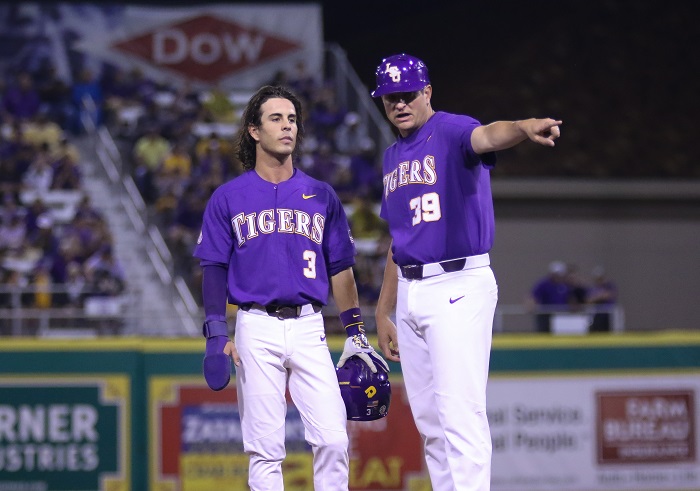
By JAMES MORAN | Tiger Rag Associate Editor
What does it take to make it to Omaha?
It’s simple, in a literal sense: five wins.
Any of the 64 teams in the NCAA Tournament can advance to the College World Series and compete for a championship if they win five more games. It’s kind of a crap shoot from that point on.
But what do the teams who’ve gotten those five wins and moved on in recent years have in common? That’s a far more interesting question.
A trend has emerged since the NCAA began requiring all teams use BBCOR baseball bats prior to the 2011 season. There’s no one surefire way to make it to Omaha, but the ones that do tend to be the ones that pitch well.
Not exactly groundbreaking stuff, but let’s take a look at the numbers.
Using simple math, dating back to 2011, 48 teams have made the College World Series. Averaging out where each of those clubs ranked nationally in that given season in nine statistical categories illustrates what those teams had in common.
Here are those statistics, along with the average national rank of the 48 teams. The lower the number, the better those teams were in the given metric.
Batting average | 85th
Runs scored | 46th
Home runs | 89th
Walks | 35th
Earned run average | 23rd
Hits allowed/9 innings | 25th
Strikeouts/9 innings | 60th
Walks/9 innings| 70th
Fielding percentage | 40th
So, on average, teams that’ve made it to Omaha tend to be the ones that allow few runs and hits, field at a high rate and draw walks at the plate.
Scoring runs is important, obviously, but teams that don’t hit for a particularly high average or hit a lot of home runs seem to be able to overcome those deficiencies.
This all seems to add up in an age of college baseball often decried as the ‘Dead Bat Era.’ The sport is more geared toward pitching, defense and athleticism than the Gorilla Ball Era in which LSU mashed an NCAA record 188 home runs en route to the 1997 National Championship.
Statistically speaking, this sets up favorably for LSU compared to the other contenders in the Baton Rouge and adjoining Hattiesburg regionals.
Here’s a chart of the national rankings in the nine different metrics for the top three seeds in each regional. We’ve also listed the average ranking of the College World Series participants since 2011.
Numbers highlighted in green indicate the team is within five spots or better of what we’ll refer to as the ‘Omaha Average.’ Numbers highlighted in red are not within 100 positions of that average.
| Category | Omaha Average | LSU | Southeastern | Rice | Southern Miss | Mississippi
State |
South
Alabama |
| ERA | 23 | 27 | 71 | 164 | 65 | 152 | 128 |
| Hits/9 | 25 | 16 | 52 | 100 | 83 | 33 | 145 |
| K/9 | 60 | 38 | 166 | 69 | 30 | 42 | 82 |
| BB/9 | 70 | 112 | 29 | 259 | 36 | 270 | 56 |
| Field % | 40 | 7 | 112 | 185 | 83 | 18 | 17 |
| BA | 85 | 44 | 249 | 63 | 16 | 86 | 21 |
| Runs | 46 | 29 | 56 | 72 | 2 | 103 | 5 |
| HR | 89 | 57 | 57 | 87 | 3 | 74 | 16 |
| BB | 35 | 69 | 21 | 129 | 4 | 208 | 1 |
That concludes today’s NCAA Regional edition of fun with stats. Apologies if assurances were given that there’d be no math.
Of course, none of this means anything once the first pitch is thrown Friday. But it’s fun to consider.




Be the first to comment